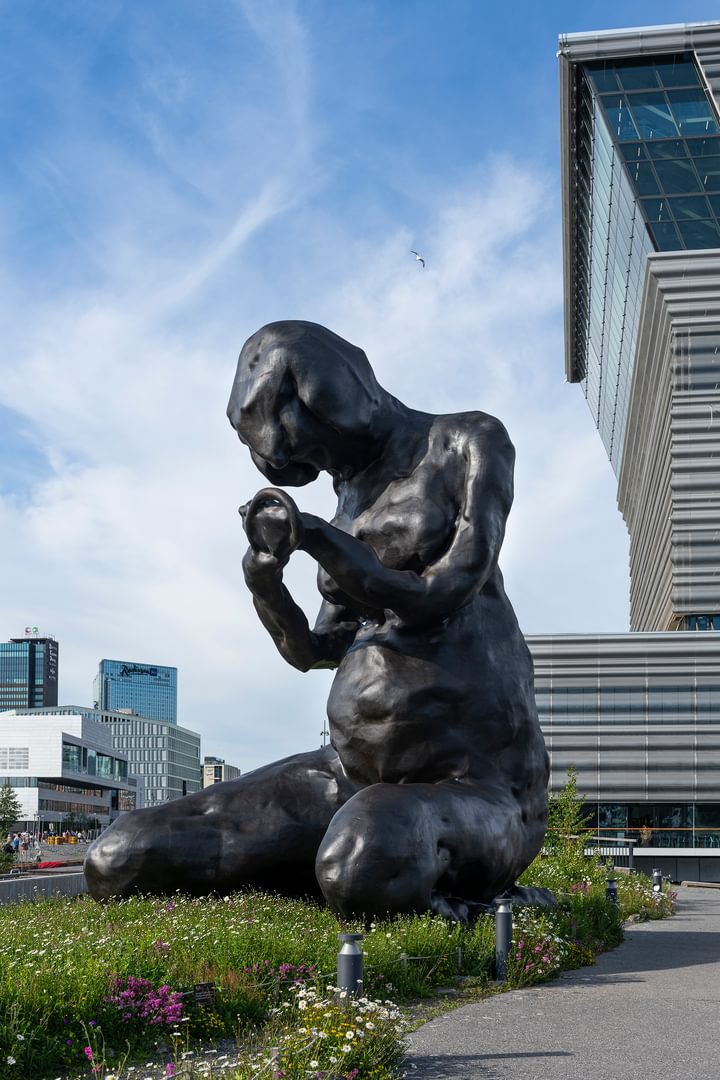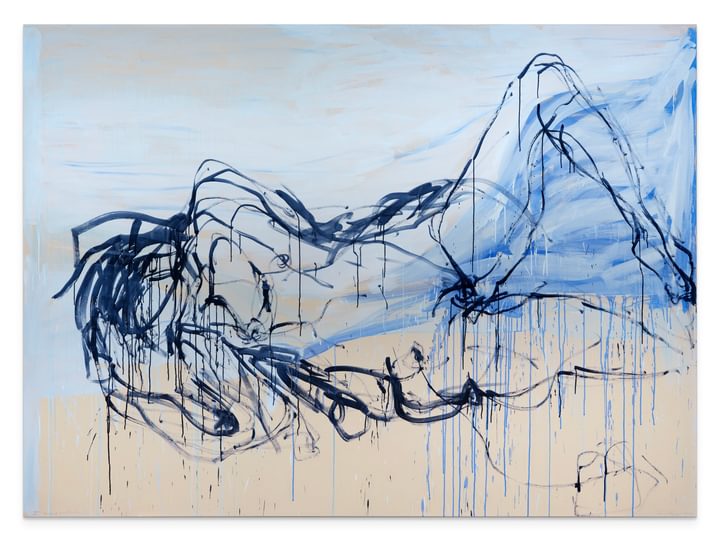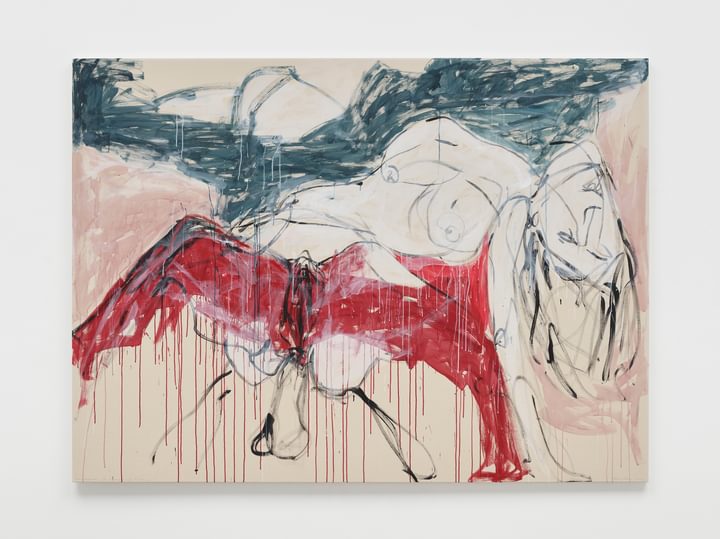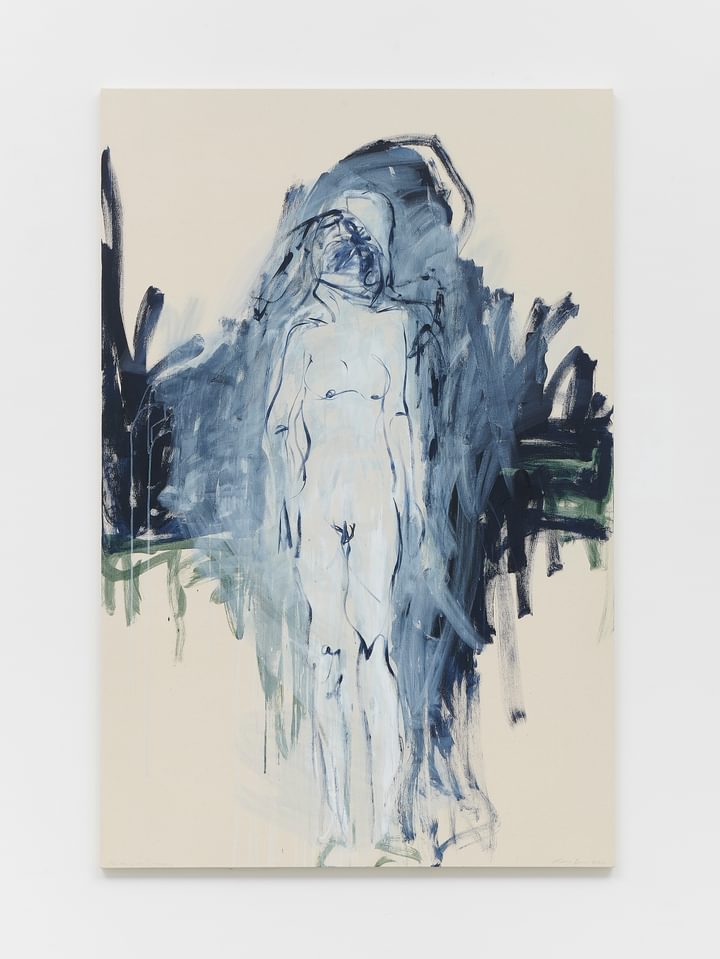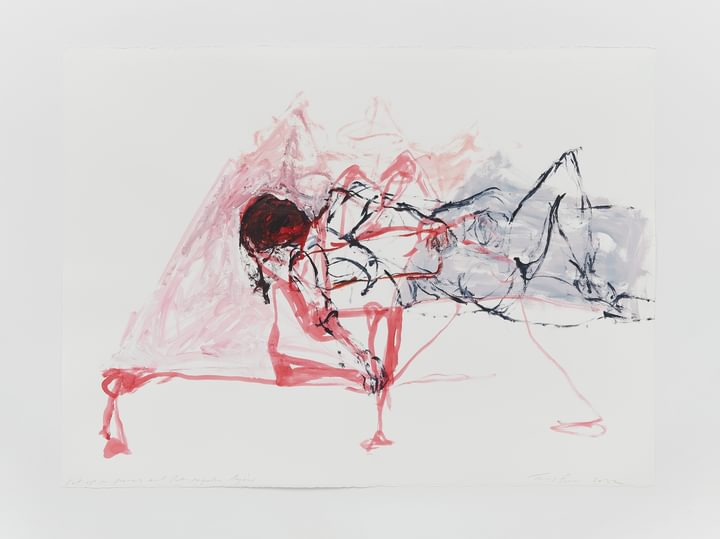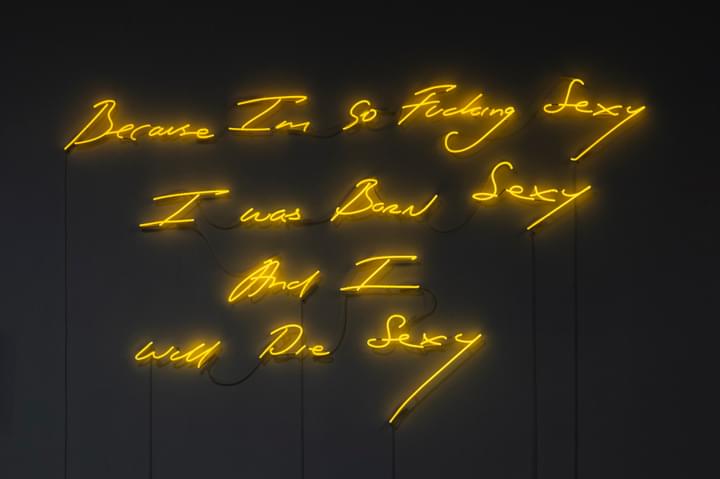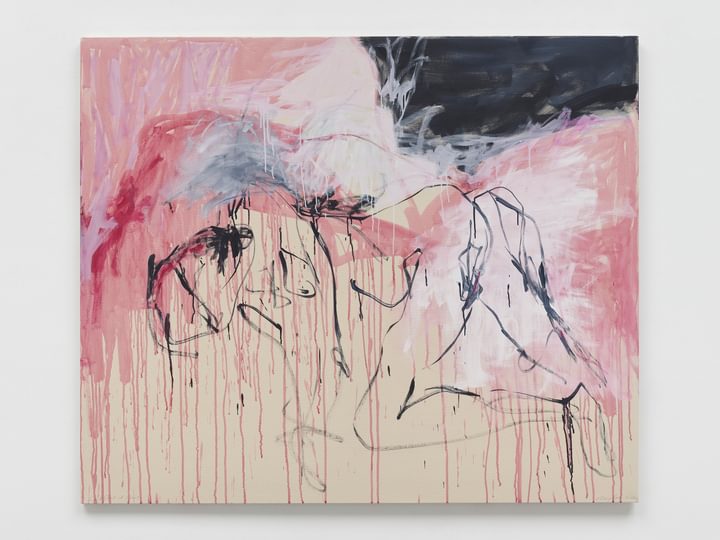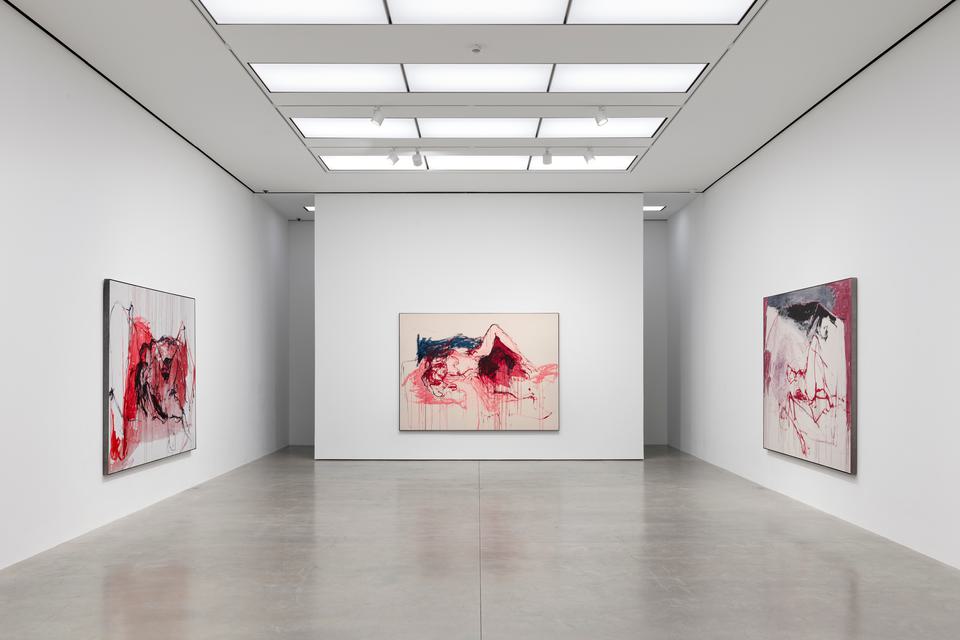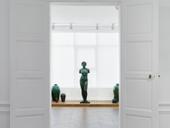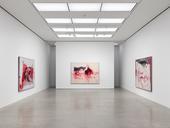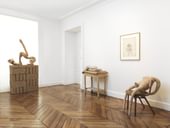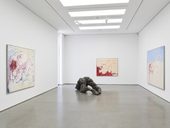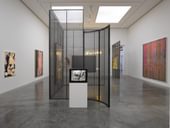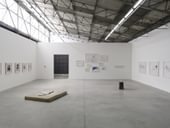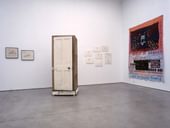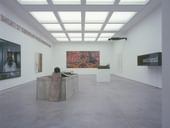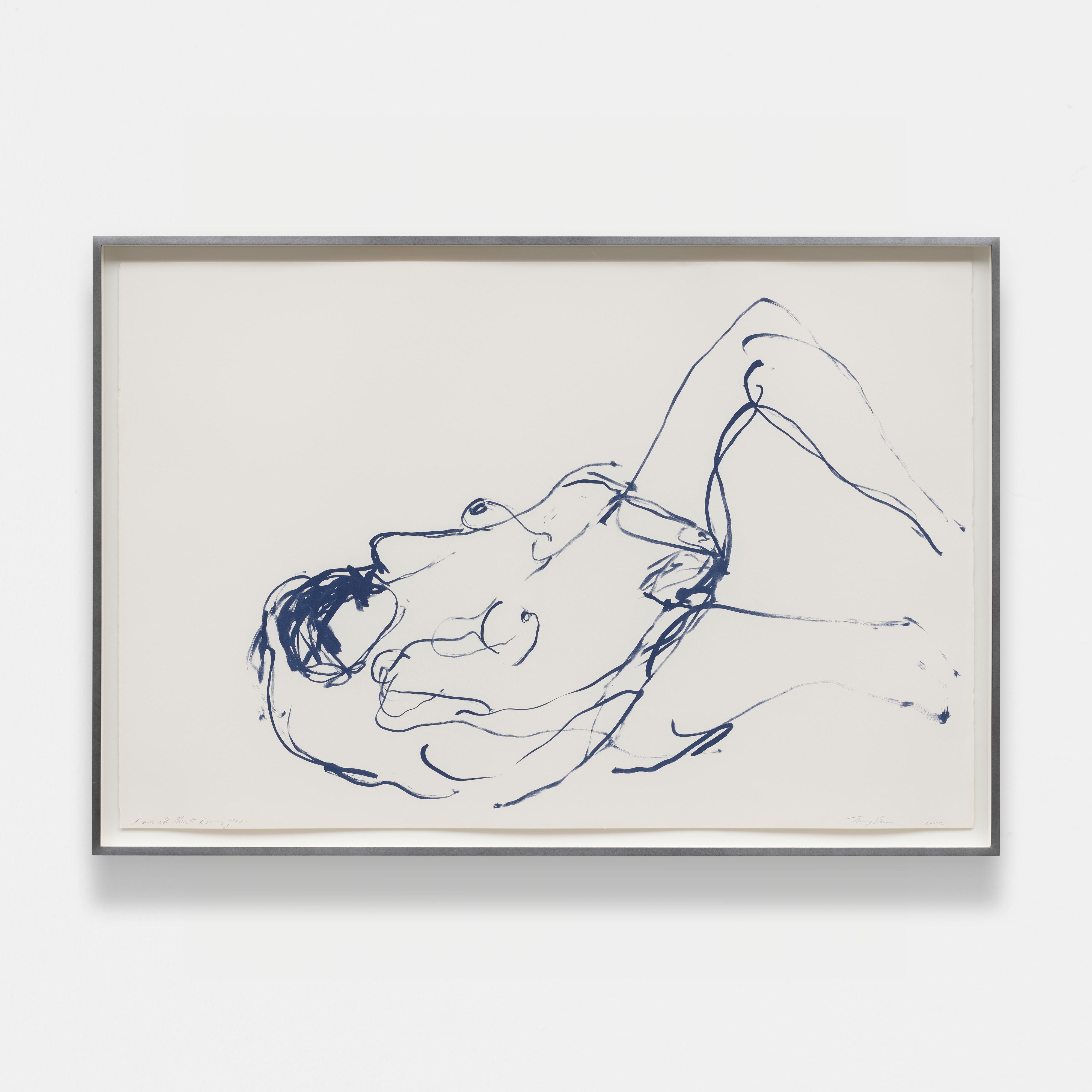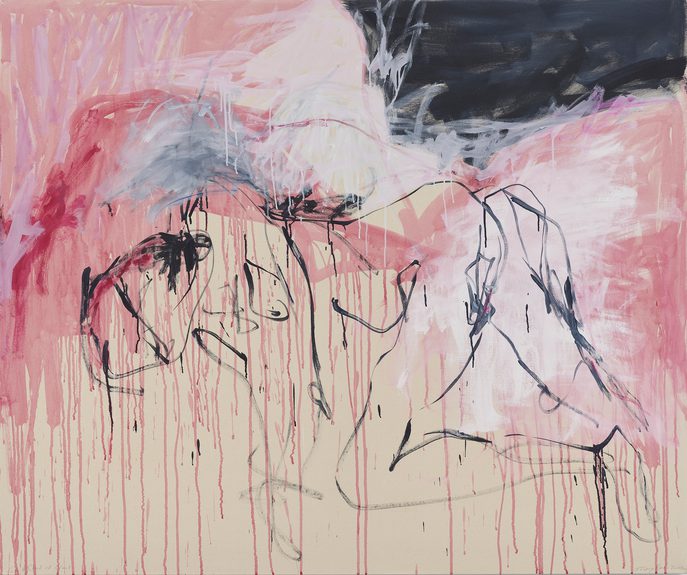
Like A Cloud of Blood, 2022
Tracey Emin
Lives and works in Margate, London and France
B. 1963
Artworks

Contact us about available Tracey Emin works
Exhibitions
Gallery Exhibition
Tracey Emin
I followed you to the end
19 September – 10 November 2024
Gallery Exhibition
Tracey Emin
Lovers Grave
4 November 2023 – 13 January 2024
Gallery Exhibition
Tracey Emin
Living Under the Hunters Moon
25 October 2020 – 13 February 2021
Gallery Exhibition
Tracey Emin
A Fortnight of Tears
6 February – 7 April 2019
Museum Exhibitions
Find out more21 February – 31 August 2026 | London
29 March – 10 August 2025 | New Haven, Connecticut
16 March – 20 July 2025 | Florence, Italy
21 October 2023 – 14 July 2024 | New York
Films
Martin Gayford on Tracey Emin
Writer and art critic, Martin Gayford explores Tracey Emin’s solo exhibition ‘I followed you to the end’ at White Cube Bermondsey in 2024.
Tracey Emin and Martin Gayford
On the occasion of Tracey Emin’s exhibition at White Cube Bermondsey in 2024, the artist was joined in conversation with writer and curator Martin Gayford.
Martin Gayford on Tracey Emin
Writer and art critic, Martin Gayford explores Tracey Emin’s solo exhibition ‘I followed you to the end’ at White Cube Bermondsey.
Tracey Emin at Faurschou
Tracey Emin discusses her exhibition, ‘Exorcism of the Last Painting I Ever Made’ (1996) at Faurschou New York.
Tracey Emin and Courtney Willis Blair
On the occasion of Tracey Emin’s exhibition ‘Lovers Grave’ (2023 – 2024) at White Cube New York, the artist was joined in conversation with Courtney Willis Blair, US Senior Director, White Cube, at The Prince George Ballroom in Manhattan.
Tracey Emin on 'I Cried Because I Love You'
Tracey explores the ideas behind the work in her exhibition 'I Cried Because I Love You' in Hong Kong, 2016.
Emin / Edvard Munch: The Loneliness of the Soul
Edith Devaney, Contemporary Curator at the Royal Academy of Arts introduces the exhibition 'Tracey Emin / Edvard Munch: The Loneliness of the Soul' in 2021.
Tracey Emin on 'How it Feels'
Tracey Emin discusses her film, How it Feels (1996), the title of which she has used for her solo exhibition at MALBA, Buenos Aires.
Tracey Emin on making films
Tracey discusses her approach to film-making with Philip Larratt-Smith.
Harry Weller on Tracey Emin's paintings
Harry Weller, the Creative Director at Tracey Emin's studio discusses her painting methods, describing how she embraces mistakes and constantly reworks the canvas.
Susanna Greeves on Dreamers Awake
Susanna Greeves discusses the work in the exhibition 'Dreamers Awake' at White Cube Bermondsey in 2017.
Tracey Emin on 'I Cried Because I Love You'
Tracey Emin explores the ideas behind the work in her exhibition 'I Cried Because I Love You' in Hong Kong, 2016.
News
Find out more17 October 2025 | The Regents Park, London
5 November 2024 | White Cube Bermondsey, London
28 October 2024 | London
Prints & Multiples
View all Prints & Multiples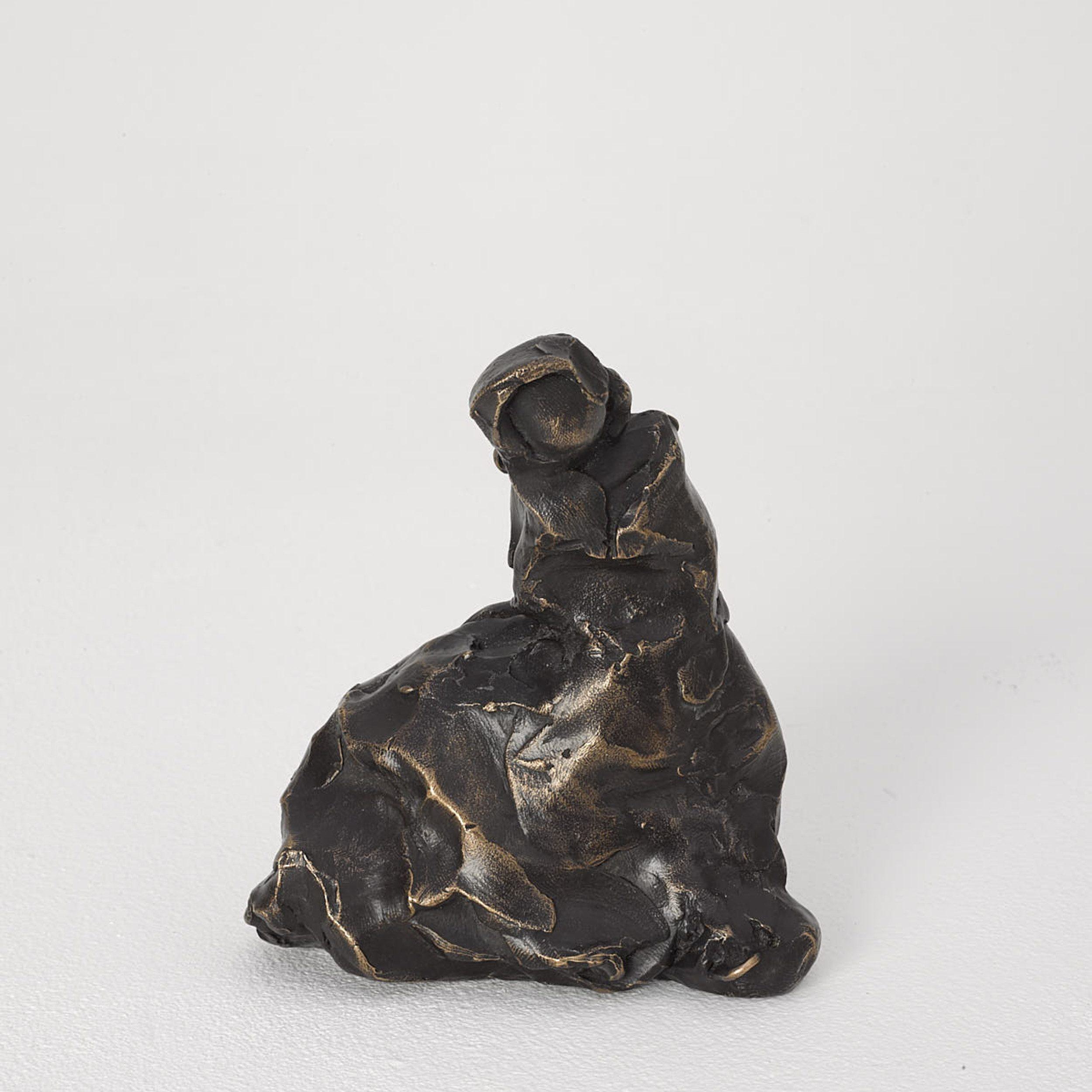
Tracey Emin
The Wedding
2019
Price upon request
Bookshop
Browse the BookshopCreate an Account
To view available artworks and access prices.


